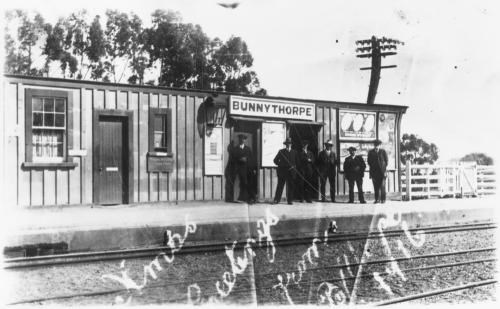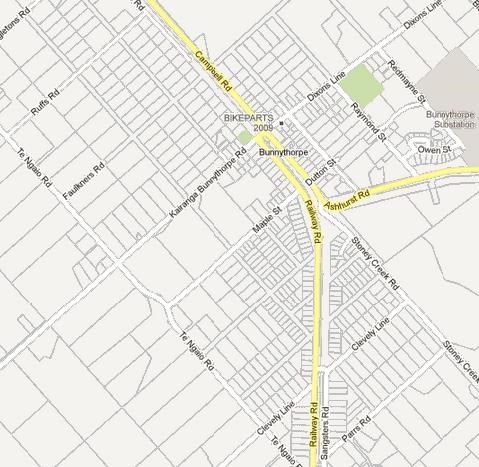Welcome aboard the Government Railways' service to Wanganui! Last stop Terrace End, next stop Trondjeim.
In 1874 a contract was let to a point on the surveyed main line, to where the future connection from the Hawkes Bay would connect. This rail was intended to be a horse-drawn tram like that currently running between Foxton and Palmerston, however it was laid with steel rail for an eventual upgrade to steam locomotives. The point of connection to the main line and to Hawkes Bay would be at a town to be built and named Mugby, and the connection became known as Mugby Junction. Mugby was expected to become the capital of the Manawatu District.
Mugby and Mugby Junction are possibly named after a anthology of 8 short stories, four of which were written by Charles Dickens in 1866, all centred on the fictional railway station Mugby Junction. One in particular, Main Line: The Boy at Mugby, written by Dickens, is a satire on the quality of refreshment rooms. The book had a number of readings around the country, and resulted in the descriptions of just what was available to eat at refreshment rooms around New Zealand. An excerpt from The Press, 31 December, 1889 provided New Zealand Railways' requirements for its refreshment rooms:
At the set rooms the lessee is required to have set table meals, meals ready, which may include soup or fish, and hot joint, beef, mutton, lamb, or pork, also potatoes, with some other vegetable in season. Fresh white bread, butter and cheese, marmalade, salad, pickles, lettuce, celery, or tomatoes, and a large cup of tea or coffee. In lieu of the joint, chops, steaks, ham and eggs, sausages, or cold ham may be supplied when ordered. Table napkins of linen or paper to be provided. The hot joints must be on the table on the arrival of the through passenger trains and the other articles in readiness with attendants to come expeditiously and wait upon the passengers. For the set-table refreshment the charge is 2s. At the counter refreshment rooms the charges for sundries at the counter are large sandwiches 6d, half do 3d, large cup of coffee 3d, bread and butter or bread and cheese 3d, bun, roll or seed cake 2d, glass of fresh milk 2d. Liquors and cigars are sold at the same rate as in hotels. The last clause in the regulations refers to the supply of "clear and pure drinking water properly filtered," which is to be supplied free of charge to all railway travellers. Sounds better than what we get now!
Quite a large area of land was reserved for the future connection to Napier, however the Hawkes Bay connection ended up terminating at Palmerston, and so the name Mugby Junction, and even Mugby, the town name, fell into disuse, although Mugby was still used at least as late as 1902. Much of the reserved rail junction land is now used by Transpower for an electrical substation. Across the railway from Mugby stands the adjacent town of Bunnythorpe, which was serviced by the same station. Now, that the name Mugby is no longer used, both towns are now considered as a single town: Bunnythorpe.
The cache is quite small - no room for trades. BYOP

Bunnythorpe Station, 1916

Top right is Mugby, Bunnythorpe is left of Campbell and Stoney Creek Roads.
References:
Cassells, K.R.: "The Foxton and Wanganui Railway", published by the New Zealand Railway and Locomotive Society, 1984.
Hawke's Bay Herald, 19 March 1867
The Press, 15 May 1867
The Press, 31 December 1889
Manawatu Times, 8 November 1902